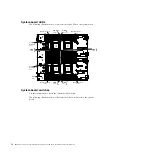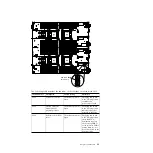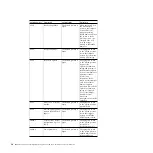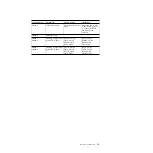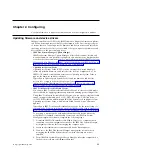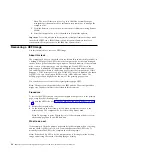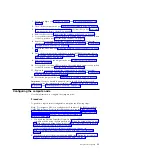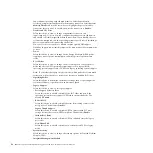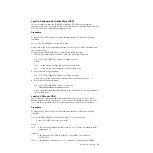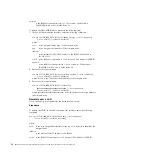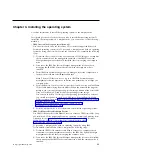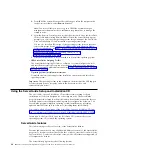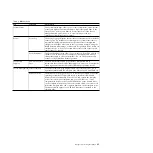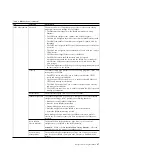
8.
Press Esc three times to return to the Setup utility main menu.
9.
Select
Save Settings
and then, select
Exit Setup
.
Using the Boot Selection Menu program
The Boot Selection Menu program is a built-in, menu-driven configuration utility
program that you can use to temporarily redefine the first startup device without
changing settings in the Setup utility.
Procedure
To use the Boot Selection Menu program, complete the following steps:
1.
Connect a keyboard, monitor, and mouse to the console breakout cable, and
connect the console breakout cable to the compute node.
2.
Turn on the compute node (see “Turning on the compute node” on page 13).
3.
Press F12 (
Select Boot Device
). If a bootable USB mass storage device is
installed, a submenu item (
USB Key/Disk
) is displayed.
4.
Use the Up Arrow and Down Arrow keys to select an item from the Boot
Selection Menu and press
Enter
.
Results
The next time the compute node starts, it returns to the startup sequence that is set
in the Setup utility.
Updating the Universally Unique Identifier and DMI/SMBIOS
data
After the system board is replaced, you must update the Universally Unique
Identifier (UUID) and DMI/SMBIOS data in the integrated management module II
(IMM2) on the new system board.
You can use the Advanced Settings Utility (ASU) and any of the following access
methods:
v
Locally (in-band)
– Through the Keyboard Controller Style (KCS) interface
– Through the LAN over USB interface
v
Remotely over a LAN
You can use the ASU under any supported operating system, or you can use the
Bootable Media Creator or a Windows- or Linux-based toolkit to create Windows
Professional Edition or Master Control Program (MCP) bootable media that
contains the ASU. For information about the ASU and instructions for
downloading and unpacking the ASU code, see http://www.ibm.com/support/
entry/portal/docdisplay?lndocid=TOOL-ASU and the
Advanced Settings Utility
User's Guide
.
The following sections provide instructions for updating the UUID and
DMI/SMBIOS data, using the different methods for accessing the IMM2. The
following conventions apply to the command syntax:
v
Variables are shown in
italics
.
v
Optional parameters are enclosed in brackets ([ ]). Do not type the brackets in
the commands. If you omit an optional parameter, the default is used.
v
Although the command syntax is shown in mixed case, the commands are not
case sensitive.
32
IBM Flex System x440 Compute Node Types 7917 and 2584: Installation and Service Guide
Summary of Contents for Flex System x440 Compute Node
Page 1: ...IBM Flex System x440 Compute Node Types 7917 and 2584 Installation and Service Guide ...
Page 2: ......
Page 3: ...IBM Flex System x440 Compute Node Types 7917 and 2584 Installation and Service Guide ...
Page 34: ...22 IBM Flex System x440 Compute Node Types 7917 and 2584 Installation and Service Guide ...
Page 50: ...38 IBM Flex System x440 Compute Node Types 7917 and 2584 Installation and Service Guide ...
Page 68: ...56 IBM Flex System x440 Compute Node Types 7917 and 2584 Installation and Service Guide ...
Page 498: ...486 IBM Flex System x440 Compute Node Types 7917 and 2584 Installation and Service Guide ...
Page 570: ...558 IBM Flex System x440 Compute Node Types 7917 and 2584 Installation and Service Guide ...
Page 578: ...566 IBM Flex System x440 Compute Node Types 7917 and 2584 Installation and Service Guide ...
Page 583: ......
Page 584: ... Part Number 81Y1144 Printed in USA 1P P N 81Y1144 ...

